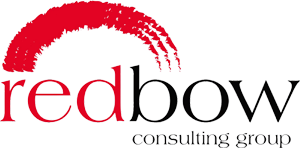
Vision to Reality – Bridging the Gap for Pharmaceutical Companies
Inspiring visions have the power to shape industries and transform societies. Think of Martin Luther King’s iconic “I Have a Dream” speech or President Kennedy’s ambitious goal of putting a man on the moon. Both leaders articulated compelling visions that inspired collective action, leveraging emotional and tangible themes to achieve extraordinary outcomes. Similarly, for a pharmaceutical marketing leader today, a well-crafted vision is crucial to navigating challenges, driving innovation and ensuring alignment across the organisation.
The Power of Vision in Pharma
The pharmaceutical sector faces unique pressures such as regulatory complexities, fragmented global teams and the relentless demand for innovation. A clear and actionable vision can serve as a unifying force, aligning diverse stakeholders – from R&D teams to marketing departments – around a shared purpose.
Without a cohesive vision, day-to-day operations can overwhelm strategic priorities. Teams may lose sight of long-term goals, and organisational activities risk becoming reactive rather than proactive. This phenomenon, often called the “Vision-Reality Gap,” is particularly detrimental in a field where innovation cycles are long, and alignment is critical.
What Makes a Strong Vision?
A strong vision resonates across all levels of an organisation. It must:
Be Grounded in Reality:
A vision should be both aspirational and achievable. It must reflect the current business environment and be relevant to every team member. For example, a pharmaceutical company’s vision might focus on “Revolutionising patient care through groundbreaking therapies” – a goal that is both inspiring and tied to tangible outcomes.Inspire Collective Action
Great visions transcend individual roles, enabling teams to see themselves as part of a bigger picture. Consider the story of a janitor at NASA who, when asked about his job, responded, “I’m putting a man on the moon.” Similarly, a pharmaceutical company’s vision might inspire a lab technician to feel their work contributes directly to saving lives.Drive Meaningful Business Results
A vision must enhance organisational performance and guide strategic decisions. It should lead to competitive advantages, such as faster drug development cycles or improved patient outcomes. For example, a biotech firm’s vision to “Cure rare diseases within a decade” can shape its investments, partnerships and R&D priorities.
Closing the Vision-Reality Gap
Aligning vision with reality requires continuous effort and strategic alignment. Here are actionable steps to bridge the gap:

1. Define Core Ideology:
According to Collins and Porras, a vision comprises three elements: Core Values, Core Purpose and Envisioned Future. For a pharmaceutical company, this might mean:
Core Values – Integrity, innovation, patient-centricity.
Core Purpose – Improving global health through advanced therapies.
Envisioned Future – Achieving a world where all diseases are preventable or curable.
2. Engage Teams at All Levels:
Vision must be communicated effectively and made accessible to every employee. Use workshops, town halls and internal campaigns to ensure alignment. Encourage teams to share how their work contributes to the broader mission.
3. Measure Progress:
Establish KPIs to track alignment between vision and operations. For instance, metrics like “time-to-market for new drugs” or “patient satisfaction scores” can provide insight into how well reality aligns with the organisation’s aspirations.
4. Adapt and Refine
The pharmaceutical industry is developing rapidly, with advancements in technology and shifts in regulatory landscapes. Regularly revisit your vision to ensure it remains relevant and inspiring.
Case Study – Vision in Action
One pharmaceutical company set a vision to “Eliminate hepatitis C globally.” This vision inspired pioneering research, global partnerships and innovative pricing strategies. By aligning its operations with this bold goal, the company not only achieved significant market success but also transformed millions of lives.
Why Vision Matters in Pharma
In a complex industry like pharmaceuticals, where teams span geographies and disciplines, a strong vision is more than a statement – it’s a strategic tool. It unites efforts, drives innovation and ensures that daily activities contribute to long-term goals. By addressing the Vision-Reality Gap, pharmaceutical companies can maximise the potential of their teams and achieve extraordinary outcomes.
Ready to Turn Vision into Reality?
At Redbow Consulting, we specialise in helping pharmaceutical companies craft and implement visions that inspire action and deliver results. Whether you’re looking to align global teams, drive innovation or enhance operational performance, we’re here to help.
Contact us today to discover how we can support your journey from vision to reality.

